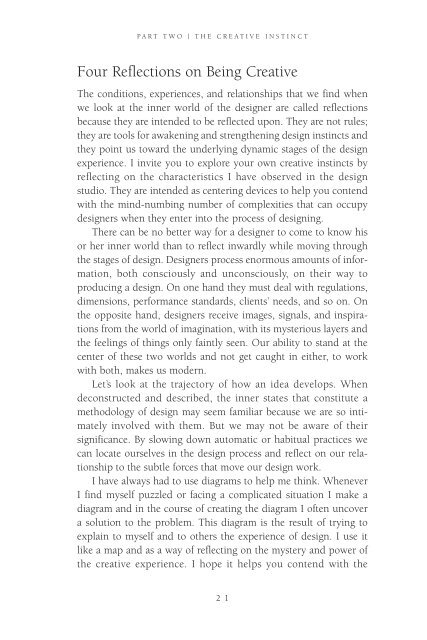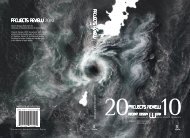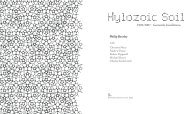The Inner Studio - Riverside Architectural Press
The Inner Studio - Riverside Architectural Press
The Inner Studio - Riverside Architectural Press
You also want an ePaper? Increase the reach of your titles
YUMPU automatically turns print PDFs into web optimized ePapers that Google loves.
PART TWO | THE CREATIVE INSTINCT<br />
Four Reflections on Being Creative<br />
<strong>The</strong> conditions, experiences, and relationships that we find when<br />
we look at the inner world of the designer are called reflections<br />
because they are intended to be reflected upon. <strong>The</strong>y are not rules;<br />
they are tools for awakening and strengthening design instincts and<br />
they point us toward the underlying dynamic stages of the design<br />
experience. I invite you to explore your own creative instincts by<br />
reflecting on the characteristics I have observed in the design<br />
studio. <strong>The</strong>y are intended as centering devices to help you contend<br />
with the mind-numbing number of complexities that can occupy<br />
designers when they enter into the process of designing.<br />
<strong>The</strong>re can be no better way for a designer to come to know his<br />
or her inner world than to reflect inwardly while moving through<br />
the stages of design. Designers process enormous amounts of information,<br />
both consciously and unconsciously, on their way to<br />
producing a design. On one hand they must deal with regulations,<br />
dimensions, performance standards, clients’ needs, and so on. On<br />
the opposite hand, designers receive images, signals, and inspirations<br />
from the world of imagination, with its mysterious layers and<br />
the feelings of things only faintly seen. Our ability to stand at the<br />
center of these two worlds and not get caught in either, to work<br />
with both, makes us modern.<br />
Let’s look at the trajectory of how an idea develops. When<br />
deconstructed and described, the inner states that constitute a<br />
methodology of design may seem familiar because we are so intimately<br />
involved with them. But we may not be aware of their<br />
significance. By slowing down automatic or habitual practices we<br />
can locate ourselves in the design process and reflect on our relationship<br />
to the subtle forces that move our design work.<br />
I have always had to use diagrams to help me think. Whenever<br />
I find myself puzzled or facing a complicated situation I make a<br />
diagram and in the course of creating the diagram I often uncover<br />
a solution to the problem. This diagram is the result of trying to<br />
explain to myself and to others the experience of design. I use it<br />
like a map and as a way of reflecting on the mystery and power of<br />
the creative experience. I hope it helps you contend with the<br />
21





